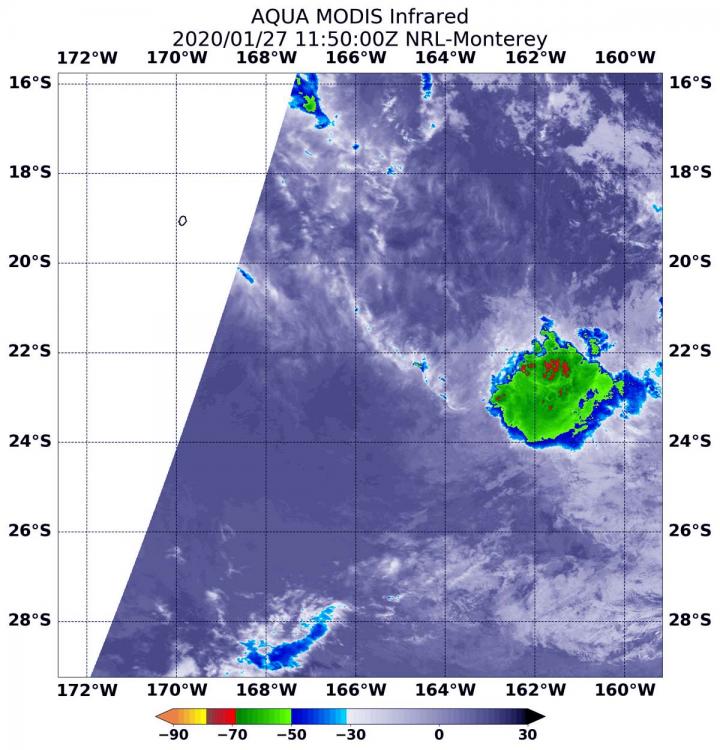
Credit: Credit: NASA/NRL
Tropical Cyclone 12P formed in the Southern Pacific Ocean on January 25 and two days later, NASA’s Aqua satellite observed the storm’s demise.
Tropical Cyclone 12P formed on January 25 at 10 a.m. EST (1500 UTC) about 142 nautical miles southeast of Niue. That was the peak for 12P, as maximum sustained winds reached 35 knots (40 mph).
On January 26, the Joint Typhoon Warning Center issued their final warning on Tropical cyclone 12P at 10 a.m. EST (1500 UTC). At that time, 12P had weakened to a depression with maximum sustained winds near 25 knots. It was located near latitude 22.4 degrees south and longitude 166.4 degrees west, about 279 miles southeast of Niue. The depression was moving southeast and weakening to a remnant low pressure area.
By January 27, the remnants of 12P were dissipating under adverse conditions. NASA’s Aqua satellite passed over the Southern Pacific Ocean and the Moderate Resolution Imaging Spectroradiometer or MODIS instrument provided an infrared view of the depression at 6:50 a.m. EST (1150 UTC). MODIS found one small area of powerful thunderstorms remained where temperatures were as cold as or colder than minus 70 degrees Fahrenheit (minus 56.6 Celsius). NASA research has shown storms with cloud top temperatures that cold (and high in the troposphere) have the ability to generate heavy rainfall. That area of heavy rainfall was quickly dissipating. 12P’s remnants are expected to dissipate later in the day.
Typhoons and hurricanes are the most powerful weather events on Earth. NASA’s expertise in space and scientific exploration contributes to essential services provided to the American people by other federal agencies, such as hurricane weather forecasting.
By Rob Gutro
NASA’s Goddard Space Flight Center
###
Media Contact
Rob Gutro
[email protected]
Original Source
https:/




